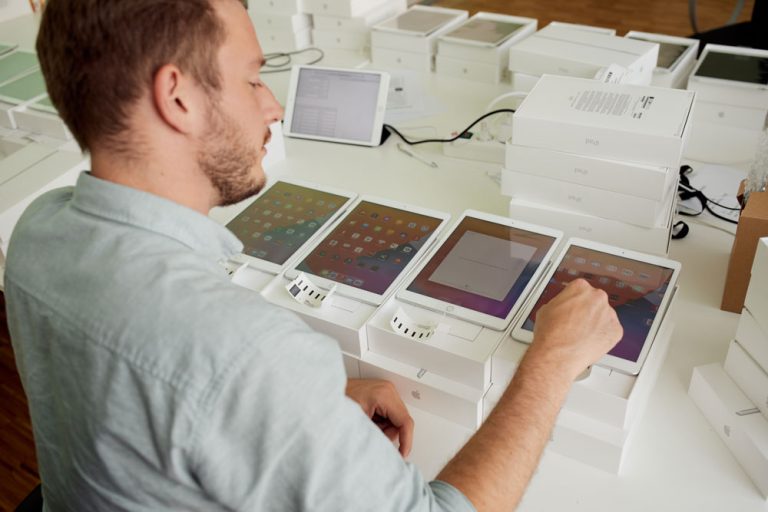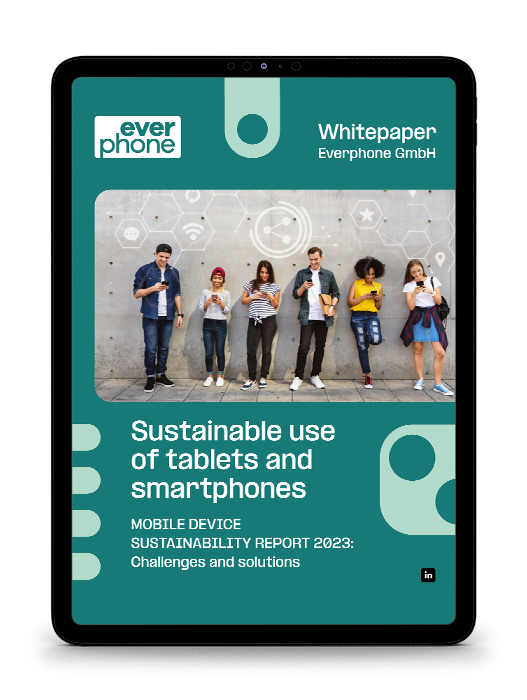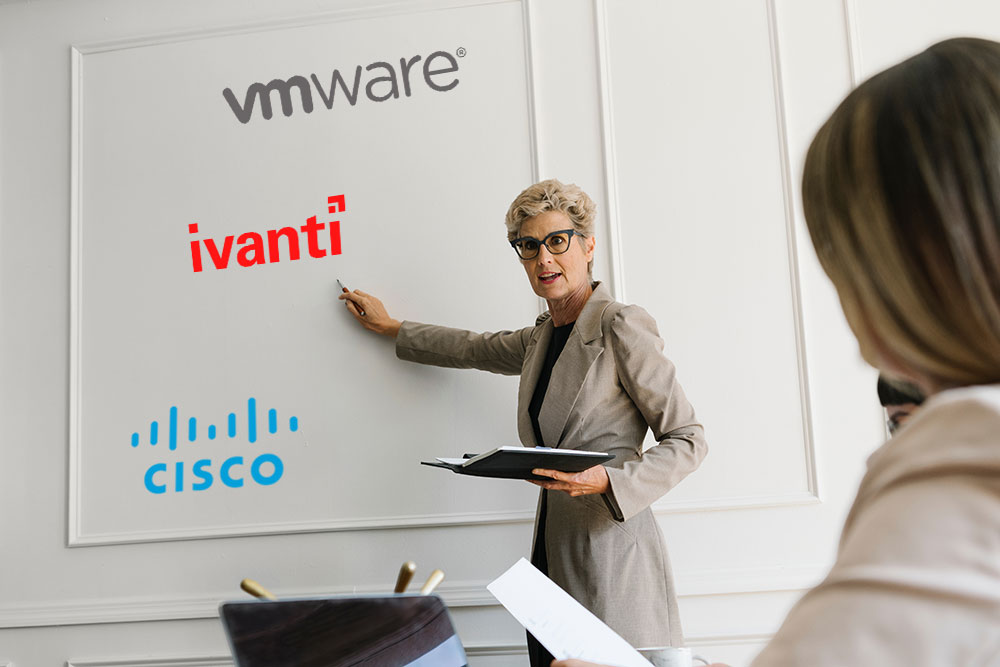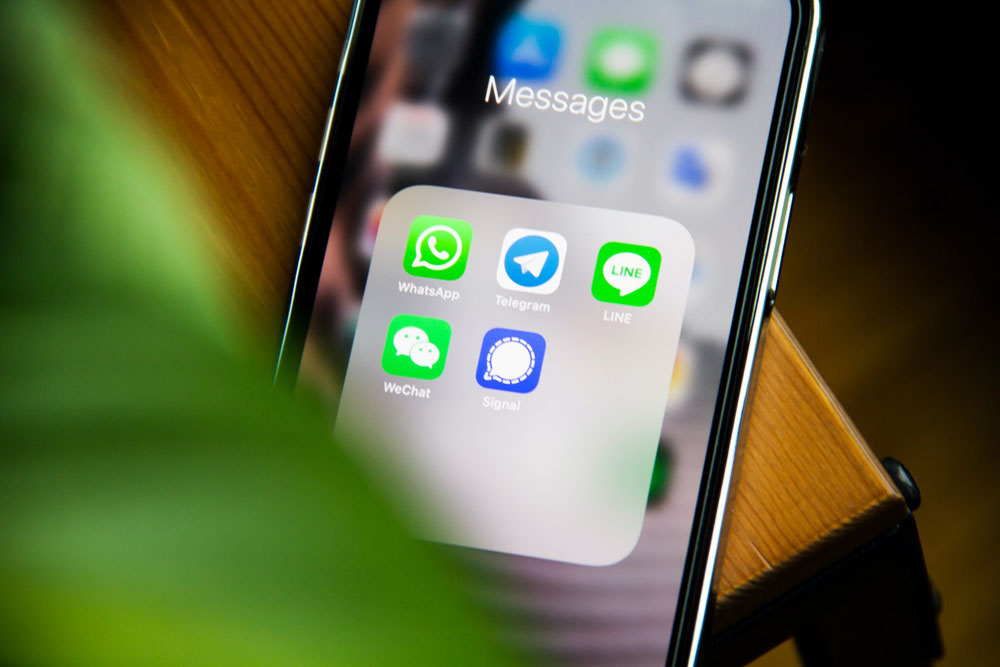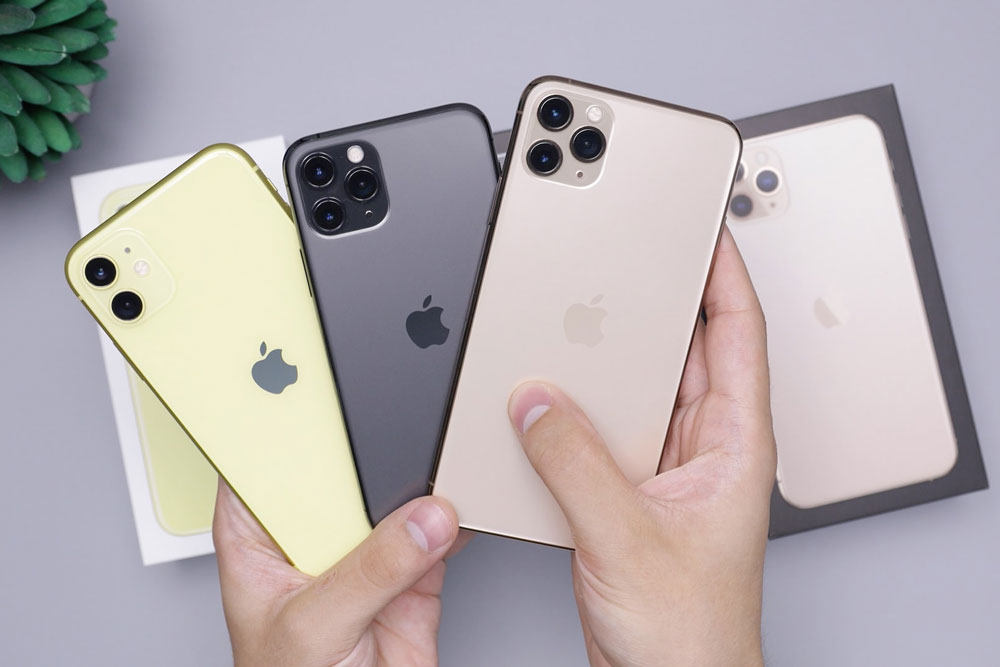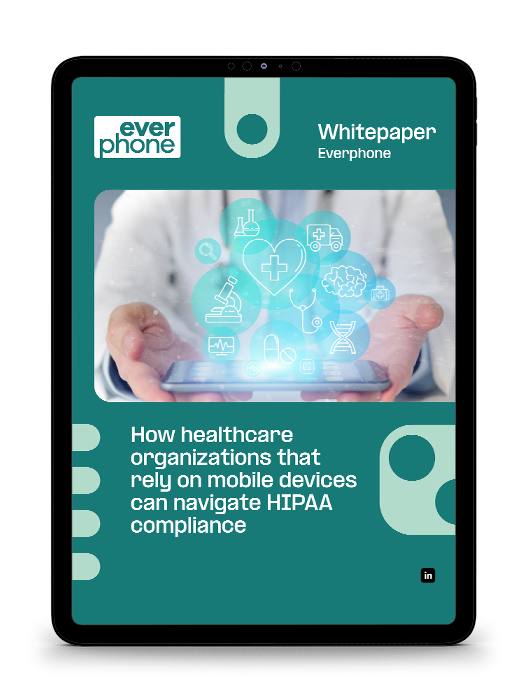What sort of devices do you use for work? There’s a good chance that you utilize more than one type of device, as it can include desktops, laptops, mobile phones, and tablets. It can also include peripheral devices such as printers and even some medical equipment. That’s a lot of devices and a lot of investment by your business.
People may think of such devices as ‘just tools’ but they are crucial to people doing their work efficiently. They also need to be monitored at every stage as your accounts department needs to track every stage of expenditure from purchase to maintenance. This is why device lifecycle management is essential to avoid unexpected expenses.
What is device lifecycle management?
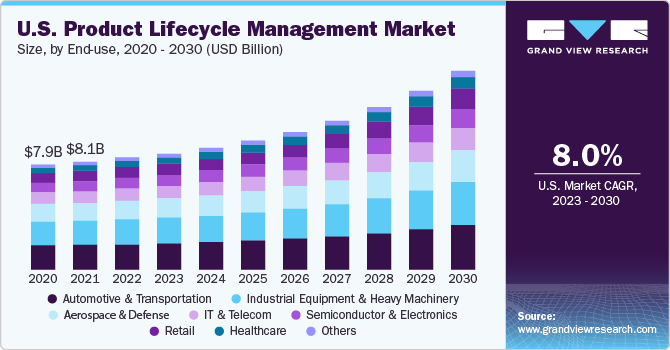
Device lifecycle management (DLM) is the process that looks at every stage of the life of any devices used by your organization. It covers every aspect relating to each device, from initial procurement through any maintenance needed and finally to disposal (which itself can pose some problems).
Devices are assets just like buildings, vehicles, etc., and as such, they need to be managed in much the same way every year. Of course, different devices will have different lifespans and you need to forecast expenditure on them just as you would use forecasting models in supply chain management.
To efficiently manage these devices, you need to recognize that each one has its own lifecycle and needs monitoring throughout. Solutions like Everphone do this for you, offering an all-in-one lifecycle management service that handles every stage of a device’s setup, management, and care.
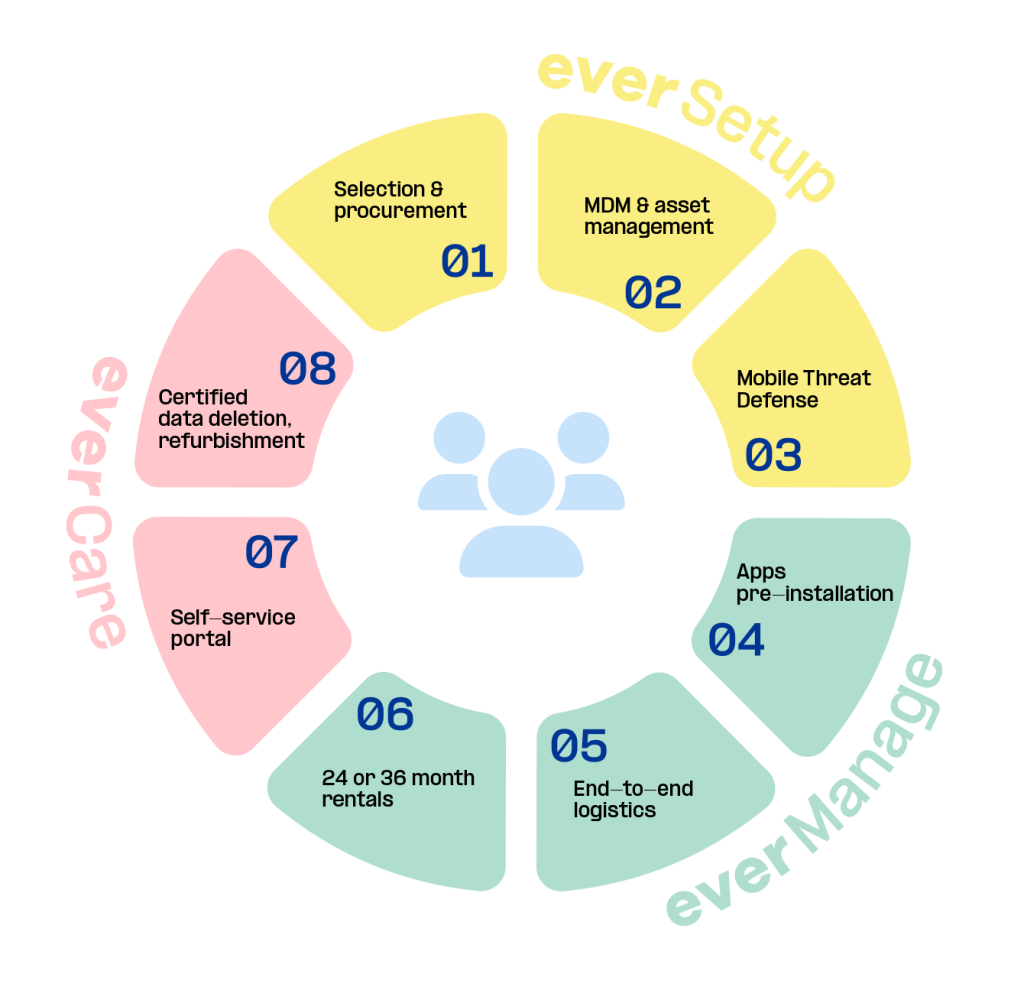
As part of your device’s lifecycle, there are a few key stages you should keep in mind:
- Acquisition/procurement.
This is the purchasing stage but can also include research (into which devices are most suitable and cost-effective), negotiation (if the organization is buying in bulk and looking for discounts), purchase, and delivery. - Deployment.
In this stage, the business deploys the device into its working arsenal. This can include any setup, support from the vendor, configuration of software and hardware, and, for some devices, integrating the device with existing systems and/or tools. - Maintenance.
In order to prolong the lifecycle, devices need to be maintained. This can include any necessary repairs, software/hardware upgrades and patches, and regular checkups. - Disposal.
When a device comes to the end of its lifecycle, it needs to be disposed of properly. In the interest of sustainability: Don’t just throw devices in the trash! You need to consider factors such as recycling, hazardous components such as batteries, and also ensuring any sensitive data and information on your devices are completely erased.
Benefits of device lifecycle management
1. Visibility
While a small company may only have a few devices listed as assets, larger organizations may have thousands. Knowing where any devices are, what they are being used for, and where they are in their projected lifecycle can be essential. Those devices may be integral to how the company operates, but the associated costs need to be tracked and forecast.
A business needs to make decisions on what devices work best for them, both in terms of affordability and efficiency. For example, if a call center was deciding between a predictive vs progressive dialer, then they would look at all aspects of any devices used in the process. Larger businesses will use some form of asset management software to track every factor associated with the devices they use.
2. Costs control
Businesses constantly face financial challenges. Salaries, investments—the list goes on. Good DLM means that an organization can keep some control over the costs associated with devices and can forecast what the related expenditure will be in the coming year.
Over time, that DLM can not only control costs but can save money by ensuring that unnecessary devices are not bought and that they get as much use as possible out of the ones they have.
Investing in a full lifecycle management solution like Everphone, which manages everything from onboarding new devices to data deletion on old ones, will help you control costs of your DLM. Fixed monthly prices on device rental will help you manage budgets. What’s more, good solutions will include customer service in the price, so you won’t waste money or experience down-time.
3. Efficiency and productivity
Every business strives for better efficiency and productivity. DLM can help you achieve this at every step of the process. By identifying the best devices for your needs, you can ensure your processes and workflows are as streamlined as possible. They can make your workforce’s jobs far easier and, when integrated with automation, can allow them to focus on other projects and tasks.
You also want to be sure that there is no disruption to your important processes. DLM can ensure you know when devices need to be maintained or replaced, especially when you consider the different lifespans of smartphones and other devices. It can also identify the best ways to repair them when needed and you may even choose to have ‘substitute’ devices in some cases so that the dreaded disruption never occurs.
4. Asset utilization
Organizations want to get the best out of any assets, whether those assets are tangible or intangible. DLM means that you utilize your device assets to the best of their capability. That can include forecasting when a device needs to be maintained or replaced as well as highlighting devices that are rarely used or underused so that they can be allocated to other tasks or sold or disposed of.
Factors in good device lifecycle management
If you are considering DLM, then there are several factors you should include in your plan.
Procurement
Your business should have some sort of procurement policy when it comes to buying devices. You may have a preferred vendor which can be useful if only ordering a small number at a time. If you do mass procurement, you may put your needs out to tender to get the best deal. For some devices such as smartphones, you also need to look at whether leasing is more cost-effective than renting or purchasing.
Of course, your primary concern is that any device can do the task you need it for but you also need to think about other factors such as integration with devices you already use.
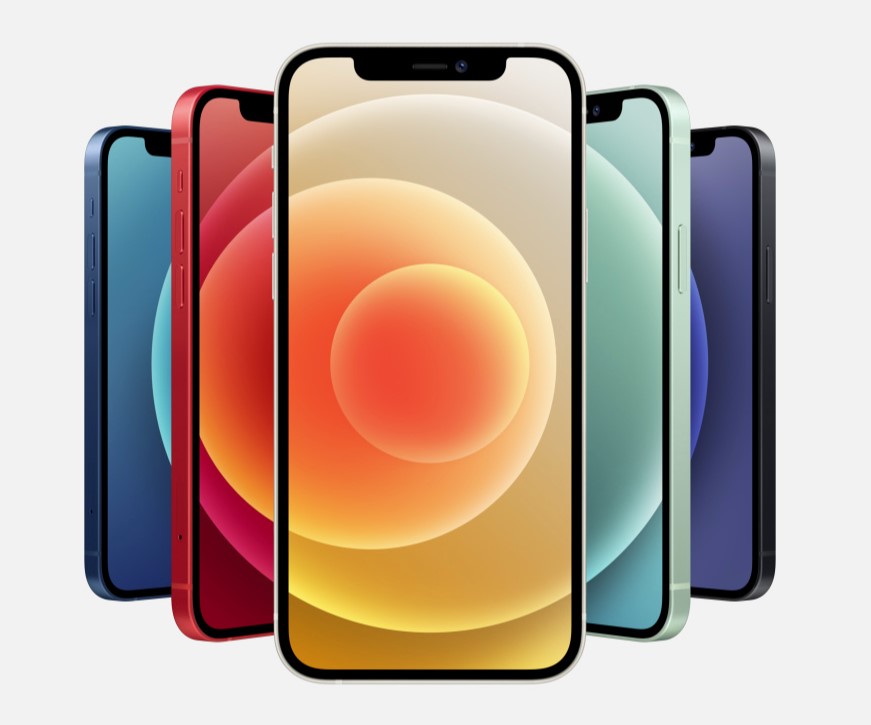
Managing your inventory
You probably have multiple devices, each with its own lifecycle and each with its own commencement date. By adding all devices to your asset management software, including marketing data software, you can track where they are, their use, when they are scheduled for maintenance, and a forecast ‘expiry’ date. In turn, efficient DLM can mean efficient management of any related costs and you can forecast future expenses such as repair or replacement.
Regulatory compliance
Depending on the nature of your business, there may be several laws and regulations you need to comply with to avoid punitive action. DLM can play a major role in ensuring compliance on relevant devices. This can include updates and/or upgrades to devices so that you know their sensitive data is well-protected.
One major consideration is the security of data from all company devices, including smartphones, laptops, and tablets. It’s worth upgrading how you store and manage this data, so consider a new data management architecture, such as a data lakehouse, that prioritizes security.
What is data lakehouse architecture? It’s a single data platform that combines the benefits of data lakes and data warehouses so you can store raw and structured data in one location. With companies relying on vast amounts of data today and cybersecurity becoming paramount, it’s become an important part of DLM.
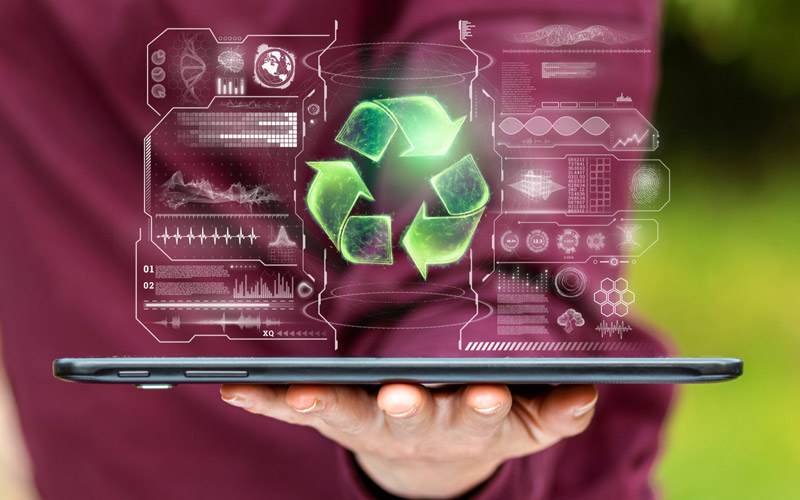
Updates
As has been mentioned, updates and upgrades are a crucial component of your DLM plan. These can help prolong the lifecycle by bringing your devices up to date in terms of performance, capability, and, perhaps most importantly, security. DLM has to assess any threats posed by device use and look to upgrade them so that they are no longer a threat.
Updates and upgrades are as important as maintenance. For example, if any of your devices are using machine learning (ML) models, then upgrades such as boosting Random Forest will make those models more efficient. Your IT team should be applying every relevant update and constantly monitoring usage for decreased efficiency or increased security threats.
Support and maintenance
One of the most important aspects of any DLM plan is the support and maintenance part. Look after your devices, and you may prolong their lifecycle. That means having an IT team that can maintain the devices you use and also having access to external support where needed. Considering the complexity of many modern devices, you need to be able to quickly and efficiently troubleshoot and fix any issues that arise.
Another thing to think about is where your devices are. Your support and maintenance plan needs to take into consideration any remote workers as well as any language differences if you operate internationally or globally. In such cases, many businesses look to outsource services to businesses more local to the workers, although some support can be phone-based.
Disposal
All good things come to an end, and so it is with your devices. Depending on the device type, you can have several choices as to how to dispose of any devices. One of your main priorities at this stage of DLM is to be sure that any device has any and all sensitive and business information erased before you choose the disposal method.
The disposal method will depend on the device type and also its state of operation. You can think about the following routes when a device comes to the end of its working life.
- Reuse/Recycle.
With some mobile devices, laptops, and desktops, you can consider recycling them. You could even make this disposal method part of your CSR (corporate social responsibility) policy and donate such devices to worthy causes. - Replace.
If the device is irreparable and/or unusable, then you will look to replace it. Given the constant advances in technology, it would be likely that you would replace the old device with a better one. - Sale.
If the device is still usable, then you may look to sell it on to others. - Hazardous components.
Many devices contain components, such as batteries, that may be classed as hazardous. When this is the case, ensure that you dispose of them safely and that you comply with any relevant environmental laws and regulations.
Device lifecycle management–the takeaway
Device lifecycle management can be one of the most important tasks for many businesses. Every business uses devices of some sort and, as the number used increases, so does the importance of DLM. Your plan has to include important elements such as maintenance and upgrades as well as identifying how to dispose of any device safely once all data has been removed.
If this sounds time consuming and overwhelming, let Everphone handle device lifecycle management for you. The all-in-one solution gives you full control over every device’s lifecycle through a self-service portal while managing complex tasks that keep your devices safe and streamlined.
